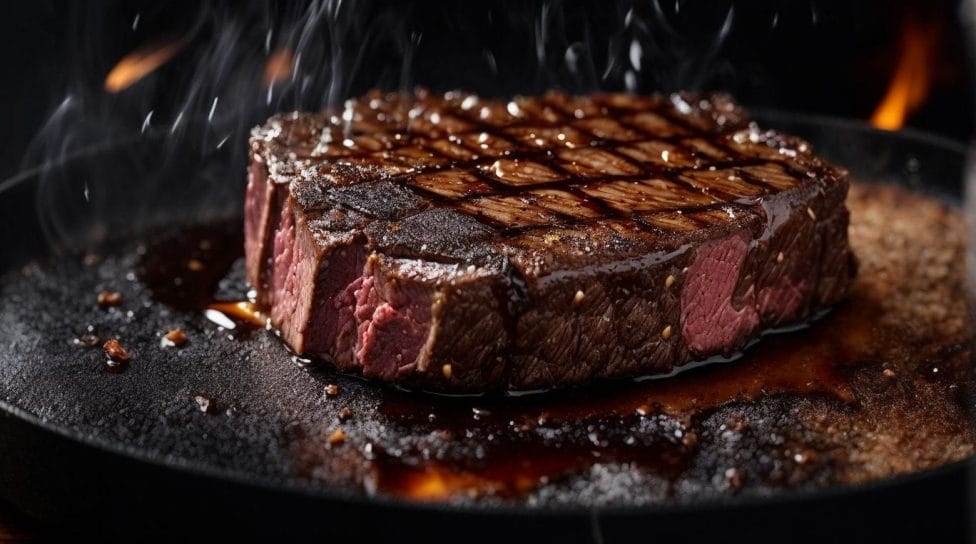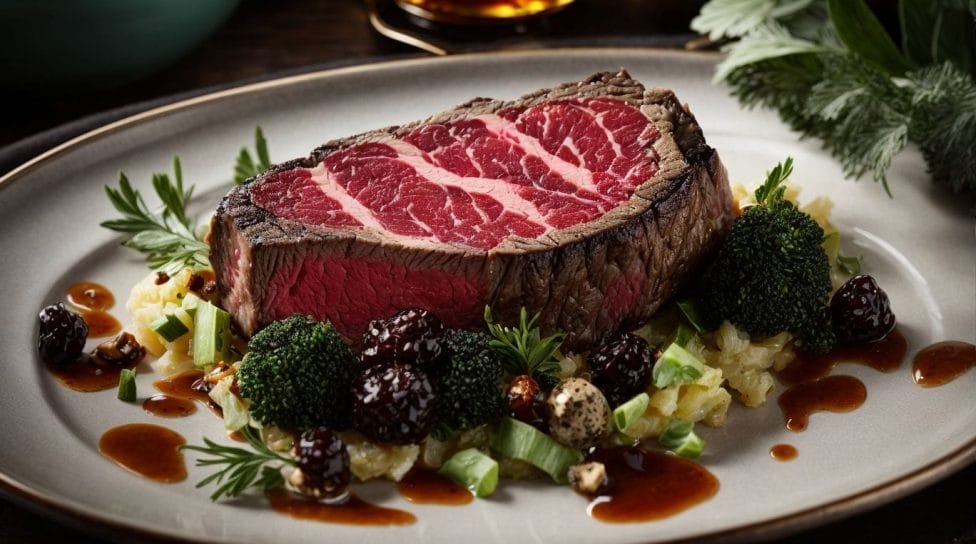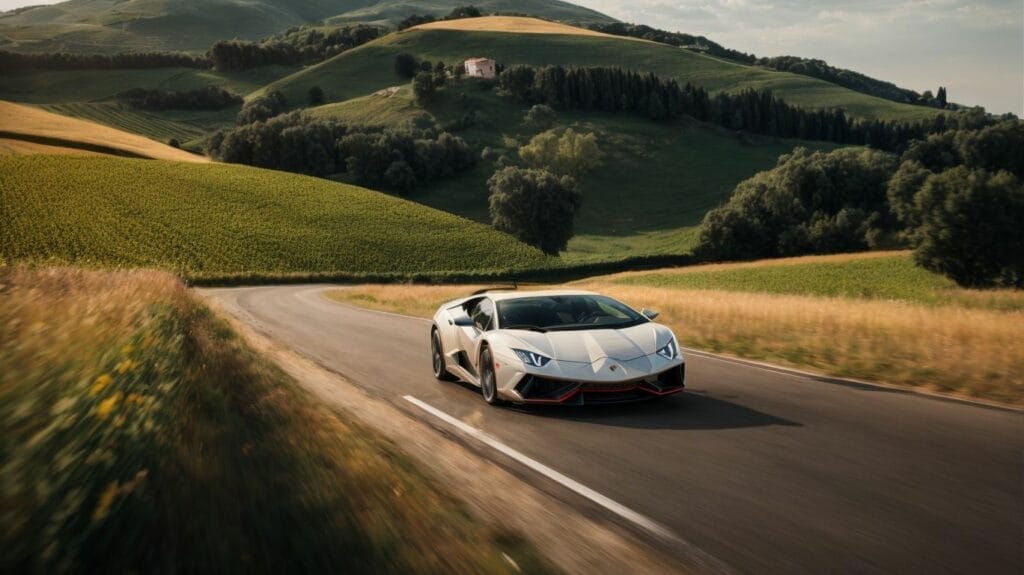Steak is often considered a luxurious and indulgent food, with some cuts reaching astronomical prices. But what exactly makes a steak expensive? Is it worth the cost? And what are the potential risks and benefits of indulging in these expensive cuts? We explore all of this and more in our article on the most expensive steaks in the world.
Firstly, what sets an expensive steak apart from a cheaper one? The main factors that contribute to the high cost of a steak include the type of cut, the breed of cattle, the feeding and aging process, and the availability and demand for the cut. Some of the most expensive cuts of steak include:
- Japanese Wagyu
- Kobe beef
- Chateaubriand
- Filet Mignon
- Porterhouse
- Tomahawk
So why do these cuts come with such a hefty price tag? One of the main reasons is the breed of cattle used. Japanese Wagyu and Kobe beef come from specific breeds of Japanese cattle that are known for their high fat marbling, resulting in a tender and flavorful steak. These breeds are also raised in a specific way, with a controlled diet and exercise, leading to the perfect balance of flavor and texture.
Another factor is the feeding and aging process. Cattle raised for expensive steaks are often fed a specialized diet and are aged for a longer period, resulting in a more tender and flavorful steak. Additionally, the availability and demand for these cuts play a role in driving up the price. These steaks are often in high demand and limited in supply, making them a sought-after luxury item.
But is it worth the cost? While expensive steaks are undoubtedly delicious and offer a unique dining experience, they also come with potential drawbacks. The high cost can be a barrier for many, and there are also concerns about the environmental impact of raising and producing these expensive cuts.
However, there are benefits to indulging in an expensive steak. Higher quality and better taste, along with potential nutritional benefits, are some of the reasons why people are willing to splurge on these cuts. Ultimately, the decision to indulge in an expensive steak is a personal one, but it’s worth understanding the factors that contribute to the high cost and considering the potential risks and benefits before making the investment.
Key Takeaways:
What Makes a Steak Expensive?

Photo Credits: Jetsetlegion.Com by Eric Garcia
There are several factors that contribute to the high cost of a steak. One of the main factors is the quality of the meat. Premium cuts from well-bred and well-fed animals are usually more expensive.
Another factor is the aging process, which can add value to the steak. Dry-aged steaks require special storage and lose moisture, which intensifies the flavor.
Last but not least, certain cuts, such as Wagyu beef or Kobe beef, are rare and have limited availability, making them more expensive.
For a luxurious steak experience that won’t break the bank, consider alternative options like grass-fed beef or trying different cuts that offer excellent flavor at a more affordable price point.
What Are the Most Expensive Cuts of Steak?

Photo Credits: Jetsetlegion.Com by Peter Wilson
When it comes to indulging in a luxurious and decadent meal, few things can compare to a perfectly cooked and tender steak. But not all steaks are created equal, and some are more prized and expensive than others. In this section, we will take a closer look at the most expensive cuts of steak, including the highly coveted Japanese Wagyu and Kobe beef, the classic Chateaubriand and filet mignon, as well as the impressive porterhouse and tomahawk steaks. Get ready to salivate over these delectable and costly cuts of meat.1. Japanese Wagyu
Japanese Wagyu is a highly sought-after and expensive cut of steak known for its rich marbling and tender texture. Here are some key features of this luxurious beef:
- Exceptional Marbling: Japanese Wagyu is renowned for its high degree of intramuscular fat, which leads to its melt-in-your-mouth texture.
- Strict Breeding Standards: The cattle used to produce this premium beef are raised with meticulous care, ensuring genetics that promote marbling and flavor.
- Grading System: Japanese Wagyu is graded based on its marbling, color, firmness, and texture, with the highest grade being A5.
- Price: Due to its limited availability, intricate breeding process, and high demand, Japanese Wagyu commands a premium price.
A couple celebrated their anniversary at a high-end restaurant and decided to splurge on a Japanese Wagyu steak. The experience was unforgettable, with the steak’s buttery texture and rich flavor leaving them in awe. It was a special treat that they will always cherish.
2. Kobe Beef
Kobe beef is renowned for its unique qualities and meticulous production process, making it one of the most expensive cuts of steak. It is sourced from Wagyu cattle raised in Japan’s Hyogo Prefecture, following strict regulations. These cattle are given a specialized diet, massaged, and even treated to beer in order to enhance the marbling and tenderness of the meat. The result is a highly marbled, flavorful, and tender beef that is known for its melt-in-your-mouth texture and rich taste.
Due to its limited availability and high demand, Kobe beef commands a premium price. For those seeking an exceptional dining experience and are willing to splurge, Kobe beef is the ultimate choice.
3. Chateaubriand
Chateaubriand is a luxurious and indulgent cut of steak that is highly regarded for its tenderness and flavor. Here are the steps to prepare this delicious dish:
- Start by selecting a high-quality Chateaubriand steak from a reputable butcher or steakhouse.
- Allow the steak to come to room temperature before cooking. This ensures even cooking throughout the meat.
- Preheat your grill or oven to a high temperature to achieve a nice sear on the outside of the steak.
- Season the Chateaubriand with salt, pepper, and any other desired seasonings. You can also marinate the steak for added flavor.
- Sear the steak on all sides to create a flavorful crust, then transfer it to indirect heat to finish cooking. This helps maintain the steak’s juiciness.
- Use a meat thermometer to check for doneness. For medium-rare, the internal temperature should be around 135°F (57°C).
- Allow the Chateaubriand to rest for a few minutes before slicing and serving. This allows the juices to redistribute throughout the meat.
- Serve the Chateaubriand with your choice of accompaniments, such as a red wine reduction, roasted vegetables, or mashed potatoes.
Enjoy this exquisite dish as a centerpiece for a special occasion or a gourmet meal.
4. Filet Mignon
Filet Mignon is a highly sought-after and pricy cut of steak renowned for its tenderness and flavorful taste. To properly prepare and enjoy this delicacy, follow these steps:
- Choose a high-quality Filet Mignon from a reputable butcher or supplier.
- Season the steak with salt, pepper, and any desired herbs or spices.
- Preheat a skillet or grill to high heat.
- Sear the steak on each side for a few minutes to achieve a caramelized crust.
- For a medium-rare doneness, transfer the steak to a preheated oven and cook until the internal temperature reaches 135°F.
- Allow the steak to rest for a few minutes before serving to lock in juices.
Indulging in Filet Mignon offers a luxurious dining experience and several benefits, such as its superior tenderness, rich marbling, and exceptional flavor. However, it’s important to note that the cost of this cut can be high, and it should be enjoyed in moderation as part of a balanced diet.
5. Porterhouse
The Porterhouse steak is a premium cut known for its large size and combination of tenderloin and strip steak. To properly enjoy a Porterhouse steak, follow these steps:
- Choose a high-quality Porterhouse steak from a reputable butcher or grocery store.
- Allow the steak to come to room temperature before cooking to ensure even cooking.
- Season the steak with salt and pepper, or your preferred seasoning blend.
- Preheat your grill or skillet to high heat.
- Cook the Porterhouse steak for about 4-5 minutes per side for medium-rare, adjusting the cooking time based on your desired level of doneness.
- Allow the steak to rest for a few minutes before slicing and serving.
Enjoy the succulent flavors and juicy tenderness of the Porterhouse steak!
6. Tomahawk
A tomahawk steak is a large, bone-in ribeye steak known for its impressive presentation. Follow these steps to cook a delicious tomahawk steak:
- Allow the tomahawk steak to come to room temperature before cooking.
- Preheat the grill or oven to high heat.
- Season the steak generously with salt, pepper, and any desired herbs or spices.
- Sear the steak on high heat for 2-3 minutes on each side to achieve a nice crust.
- Move the steak to indirect heat and continue cooking until it reaches your desired level of doneness.
- Let the steak rest for a few minutes before slicing and serving.
Enjoy your perfectly cooked tomahawk steak with your favorite sides and a glass of wine to enhance the dining experience.
Remember to handle the tomahawk steak with care due to its size and weight, and always use a meat thermometer to ensure the steak reaches the desired internal temperature.
What Are the Factors That Affect the Price of Steak?

Photo Credits: Jetsetlegion.Com by Vincent Scott
Have you ever wondered why some steaks cost more than others? The price of a steak can vary greatly depending on several factors. In this section, we will discuss the key elements that contribute to the cost of a steak. From the breed of cattle used to the marketing strategies employed, we will delve into the intricacies of what makes a steak expensive. By understanding these factors, we can gain a better understanding of the economics behind the most expensive steaks on the market.1. Breed of Cattle
The type of cattle is a crucial factor in determining the price and quality of steak. Different breeds possess distinct characteristics that affect the flavor, tenderness, and marbling of the meat. Here are some key considerations to keep in mind when it comes to the breed of cattle:
- Genetics: Certain breeds, such as Japanese Wagyu and Angus, are renowned for their superior meat quality due to their genetic makeup.
- Marbling: Some breeds naturally have a higher level of intramuscular fat, resulting in a more tender and flavorful steak.
- Muscle Structure: The structure of the muscles can vary among breeds, influencing the texture and tenderness of the meat.
- Rarity and Demand: Rare and exotic breeds, like A5 Kobe beef, can command a higher price due to their limited availability and high demand.
- Specialized Breeding Programs: Some breeds are carefully bred and raised under specific conditions to enhance certain characteristics, further increasing their value.
Considering the breed of cattle is crucial when selecting an expensive steak as it directly affects the taste and quality of the meat.
2. Feeding and Aging Process
- Feeding process: The type of feed used greatly influences the flavor and tenderness of the steak. High-quality steaks are often fed a diet of grains, which adds marbling and enhances taste.
- Aging process: Dry aging and wet aging are two common methods. Dry aging involves hanging the meat in a controlled environment for weeks to enhance tenderness and concentrate flavors. Wet aging involves vacuum-sealing the meat to allow for natural enzymes to break down the muscle fibers.
Pro-tip: Look for steaks that have undergone a longer dry aging process for a more intense flavor and tenderness.
3. Availability and Demand
The availability and demand of certain cuts of steak play a significant role in determining their price.
- Rarity: The scarcity of certain cuts, like Japanese Wagyu, contributes to their high price.
- Desirability: Popular cuts, such as Filet Mignon and Porterhouse, are in high demand, driving up their cost.
- Exclusivity: Limited availability of specialty cuts like Chateaubriand and Tomahawk makes them more expensive.
Fun fact: The demand for high-quality steaks has increased globally, leading to a rise in prices over the years.
4. Branding and Marketing
Branding and marketing are essential components in determining the pricing of high-end steaks. Premium steak brands heavily invest in creating a luxurious image, utilizing tactics like unique packaging, endorsements from celebrities, and targeted advertising strategies. These efforts cultivate a sense of exclusivity and opulence, enabling them to charge higher prices. Furthermore, effective branding and marketing aid in establishing a devoted customer base and setting the brand apart from competitors.
Fun fact: Did you know that certain luxury steak brands even offer personalized branding options, allowing customers to have their initials or logos on their steak?
What Are the Benefits of Eating Expensive Steak?

Photo Credits: Jetsetlegion.Com by Bruce Flores
While some may argue that spending a large amount of money on a steak is unnecessary, there are actually several benefits to indulging in an expensive cut of meat. In this section, we will explore the advantages of eating expensive steak, from its superior quality and taste to its nutritional value. Additionally, we will discuss the unique dining experience that comes with splurging on a steak that is considered to be one of the most expensive in the world.1. Higher Quality and Taste
To ensure a higher quality and taste when enjoying expensive steak, follow these steps:
- Choose a reputable butcher or supplier that sources high-quality, well-marbled cuts of steak.
- Opt for premium cuts such as Japanese Wagyu or Kobe beef, known for their exceptional tenderness and rich flavor.
- Consider the grade of the steak, with higher grades indicating better marbling and taste.
- Pay attention to the aging process, as dry-aged steaks often have a more concentrated flavor.
- Cook the steak properly, using methods like searing, grilling, or broiling to enhance the flavor and retain moisture.
- Allow the steak to rest before serving, as this helps to distribute juices and enhance tenderness.
- Pair the steak with complementary flavors, such as a red wine sauce or a compound butter, to further elevate the taste.
2. Nutritional Value
Eating expensive steak can provide numerous nutritional benefits. Here are some key points to keep in mind:
- Protein: Steak is a rich source of high-quality protein, which is essential for muscle growth and repair.
- Vitamins and Minerals: Steak contains important nutrients like iron, zinc, B vitamins, and selenium, which are crucial for overall health.
- Fatty Acids: Certain cuts of steak, such as ribeye or T-bone, are a good source of healthy fats like omega-3 fatty acids.
- Amino Acids: Steak contains all of the essential amino acids, which are necessary for building and repairing tissues in the body.
Throughout history, humans have been consuming meat for thousands of years, recognizing its high nutritional value. Early civilizations relied on hunting and gathering meat as a vital part of their diet, providing energy and essential nutrients for survival. While the cost of expensive steak may be a barrier for some, its nutritional value remains a significant factor for those seeking a protein source that is rich in nutrients.
3. Unique Dining Experience
Eating an expensive steak offers a unique dining experience that goes beyond just the taste. Here are some steps to enhance your dining experience:
- Select a high-end steakhouse known for its quality cuts and exceptional service.
- Choose a steak with unique characteristics, such as a tomahawk or chateaubriand, which are visually impressive and can be shared.
- Consult with the knowledgeable staff about cooking preferences and recommended wine pairings for a truly customized experience.
- Enjoy the ambiance and attention to detail, from elegant table settings to expertly crafted side dishes.
- Savor each bite slowly, appreciating the flavor profiles and textures of the steak.
Indulging in a one-of-a-kind dining experience is a memorable experience that’s perfect for special occasions or treating yourself to something extraordinary.
What Are the Risks and Drawbacks of Eating Expensive Steak?

Photo Credits: Jetsetlegion.Com by Ryan Davis
While indulging in an expensive steak may seem like the ultimate luxury, it’s important to consider the potential risks and drawbacks that come with it. In this section, we will discuss the various factors that make expensive steak a potential hazard for both our wallets and our well-being. From the high cost to the health concerns and environmental impact, let’s take a closer look at the potential downsides of indulging in the most expensive steak.1. Cost
- The cost of an expensive steak is influenced by various factors.
- Grade: Higher grades, such as Prime or Wagyu, command higher prices.
- Cut: Certain cuts, like filet mignon or ribeye, are more expensive due to their tenderness and popularity.
- Origin: Specialty or imported steaks, such as Kobe beef, come with a higher price tag.
- Aging: Dry-aged steaks are pricier as the aging process enhances flavor and tenderness.
- Supply and demand: Limited availability and high demand can drive up the cost.
2. Health Concerns
When it comes to consuming expensive steak, there are certain health concerns to keep in mind. Here are some steps to consider:
- Limit consumption: Eating expensive steak should be a treat rather than a regular occurrence.
- Balance with other foods: Ensure a well-rounded diet by including a variety of fruits, vegetables, and whole grains.
- Watch portion sizes: Moderation is key to prevent excessive calorie and fat intake.
- Consider cooking methods: Opt for grilling, broiling, or baking instead of frying to minimize added fats.
- Trim excess fat: Remove visible fat to reduce saturated fat content.
- Choose lean cuts: Look for cuts like filet mignon or sirloin that are lower in fat.
3. Environmental Impact
When considering the environmental impact of consuming expensive steak, it’s important to be aware of the following:
- 1. Livestock production contributes to greenhouse gas emissions, deforestation, and water pollution.
- 2. High-end steaks often come from livestock raised on intensive grain-fed diets, which require large amounts of water and contribute to land degradation.
- 3. The transportation of luxury steaks from distant locations adds to carbon emissions and energy consumption.
- 4. The demand for expensive cuts perpetuates unsustainable agricultural practices.
Pro-tip: Consider reducing your meat consumption and opting for more sustainable and locally sourced protein alternatives to minimize the environmental impact of your diet.




